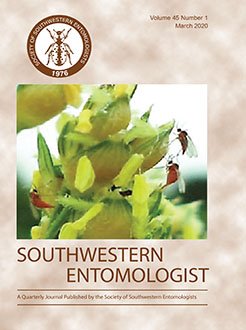The grasshopper Sphenarium purpurascens (Charpentier) (Orthoptera: Pyrgomorphidae) is one of the most important pests of crops in Mexico. Entomopathogenic fungi used as biological control agents in different agroecosystems are natural enemies of the insect. Lethal effects of two native strains of Metarhizium anisopliae (Metchn.) Sorokin, and a commercial strain of Metarhizium acridum (Driver and Milner) were evaluated against S. purpurascens purpurascens, by measuring lethal concentrations 50 and 90 (LC50 and LC90). The native strain with most pathogenicity was compared with the commercial strain in the field. LC50 and LC90 for strain 6MaEM under controlled conditions were 1.7 × 105 and 1.0 × 106 conidia/ml compared to 1.7 × 106 and 7.1 × 106 for strain 9MaEM. Cumulative survival of M. anisopliae and M. acridum 28 days after application in the field was 53.99 and 2.06%, respectively. Sporulation of 6MaEM was 8.3%, compared to 27.63% by M. acridum. M. anisopliae had acceptable pathogenicity under field conditions, but M. acridum killed the most grasshoppers. More isolates are needed and doses and formulations need to be adjusted in future studies to have a pool of biological control options.
How to translate text using browser tools
31 March 2020
Pathogenicity of Metarhizium spp. on Sphenarium purpurascens in Central Mexico
Venecia Quesada-Béjar,
Miguel B. Nájera-Rincón,
Enrique Reyes-Novelo,
Carlos E. González-Esquivel
ACCESS THE FULL ARTICLE

Southwestern Entomologist
Vol. 45 • No. 1
March 2020
Vol. 45 • No. 1
March 2020




